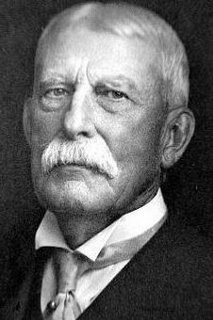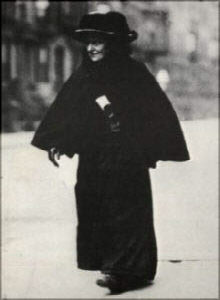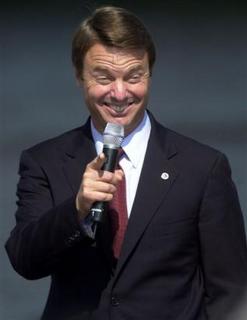 [The following is an epitome of a talk I delivered to two separate sections of a course entitled “Fundamentals of Business Communication” at the University of Pittsburgh’s College of Business Administration this morning.]
[The following is an epitome of a talk I delivered to two separate sections of a course entitled “Fundamentals of Business Communication” at the University of Pittsburgh’s College of Business Administration this morning.]
. . . [Your professor] asked me to come here and speak this morning on two things. She wanted me to describe to you how my career has developed, and she wanted me to give you my insights, as a former venture capital lawyer and as someone who has been involved in the development of new businesses, into what a venture capitalist is looking for in a presentation from a company looking for investment.
I understand you’ve been given an assignment to prepare a short hypothetical presentation asking for money from a venture capitalist. That kind of presentation, in my world, is typically called the “Elevator Pitch” – because it shouldn’t be any longer than it would take to ride up in an elevator with someone in a relatively short building. In the real world, we’re often talking about a pitch that lasts no more than 60 seconds, or perhaps 2 minutes at the most.
At first I didn’t think the two topics I’d been asked to talk about today had much to do with each other, but I’ve decided that they have a lot to do with each other. The “Elevator Pitch” to a venture capitalist is just one species of short communication designed to express something about what you want out of life – whether it’s a job or a place to live or a lifetime companion. While some of the tips we’re going to go over today are specific to the venture capital pitch, others have broader applicability to the kinds of statements of desire you may have occasion to make in the future. Based on my experience in developing opportunities for myself, I want to suggest to you that the “Elevator Pitch” should not be considered an empty classroom exercise, but a lifetime tool to help you open doors for yourself – especially if you are open to the spontaneous generation of opportunities that come up where you least expect them to . . .
. . . Now, about the “Elevator Pitch” itself: why does it need to be so short? When I was first informed about “Elevator Pitches” and the fact that they can run as short as 60 seconds, I was a bit offended at first. I mean, what we’re talking about here is potentially a multi-million dollar investment. Shouldn’t we have a chance to take our time on this, warm our listeners to our subject, tell a little bit about our life story?
I think there are a number of reasons why venture capitalists like to keep these presentations short. One of them can be found in the nature of communication itself.
Each of us, in our own way, grows up thinking we are the center of the universe, and that every little fact about ourselves is fascinating. We keep photos of our memories, yearbooks, trophies on the shelves, we put posters on our walls that are meant to express something about what we like and who we are, we keep journals. We’re fascinated by ourselves.
And what about the rest of the billions of other people who live on Earth? Well, not so much. Most of them will never know anything about you, and even if they have a chance to, most will probably choose not to pay much attention. It’s nothing to do with you. They’re just busy being fascinated by themselves.
Much of our communication with other people on this planet is a navigation across the great divide between you saying “I’m fascinating,” and someone else saying “I’m not interested.” In dating, there is a tacit understanding that you can talk about yourself as long as you’re willing to listen to someone else talking about themselves. Advertising? Advertising is clever, because it is a message about me dressed up to appear to be a message about you. Journalism? That’s a message about something else, held up as important to both you and me, but that is often merely a camouflaged message about me.
Most commerce, in fact, takes place somewhere on that plane between “I’m fascinating” and “I’m not interested.” Particularly where the type of communication is strategic by its very nature, there is a tendency to push away superfluous information. We’re trying to transact business here, we say -- let’s get to the bottom line. When you stop in a convenience store to buy a pack of gum, you don’t want to know the life story of the cashier, you just want to pay for the gum and be done with it. Gum . . . money . . . let’s move on.
A venture capitalist is like that. He or she knows you’ve come to ask him or her for money. And he has to invest some money – a little known secret, but we’ll get to why in a moment – so there’s a reason for him or her to be there listening to you. But the nature of the business is such that hundreds of companies and business ideas are out there looking for cash, and the VC is just looking to keep the pitch as painless as possible. It’s not so much that he or she will decide to make an investment based on a 2 minute hearing, but if in 2 minutes he or she can’t think of a good reason to hear more about your proposition, he or she is just going to have to leave it there, for the sake of efficiency. Eventually, if he or she has an interest in investing, he or she will want to know your life story and more . . .
. . . At this point, maybe it makes some sense to go through some of the elements of a good venture capital pitch from the standpoint of the venture capitalist.
I mentioned earlier that a venture capitalist has to invest money. It’s not always apparent to a first-time entrepreneur that this is the case, but it is typically true. A venture capitalist has typically gone out and raised money from individuals and institutions on the premise that he or she has an expertise in investing that money in private companies in some sector, and that by doing so he or she can earn higher than average rates of return on investment. Thus, the “Elevator Pitch” that a venture capitalist has had to give to his or her investors becomes a factor that limits the scope of investment that can be considered by that venture capitalist. At the same time, however, the venture capitalist can’t simply put the money in the bank and let it collect interest – the investors are looking for greater returns than that. So, there is a reason why the venture capitalist might want to talk with you.
We’ve discussed brevity as an essential component of a good “Elevator Pitch.”
Another is tailoring your message to your audience. You have to be able to anticipate what the venture capitalist is going to be interested in, and plan your communications accordingly, and this takes research. You have to assume that if they don’t see how it relates to them, they’ll tune out immediately. Many venture capitalists have narrow investment guidelines, and if you go in without understanding them, you’ll just make them feel like you’ve been wasting their time.
One of the most important elements of the good “Elevator Pitch” to a venture capitalist is being tangible. If you walk into a VC and say, “I have a piece of technology that is going to change people’s lives” – well, obviously that’s a little thin. For that reason, there are several subjects that should be covered in a VC “Elevator Pitch”:
• What is your product or service?
As an introductory matter, you should preferably be able to get this concept out in one easy-to-understand sentence. There used to be a concept in Hollywood, when people would come in to pitch an idea for a movie, called “high concept.” This basically meant that you should be able to describe this movie in one simple sentence. “A big guy grows up in the North Pole thinking he’s an elf, but then he leaves for New York City to look for his real father. Think Jim Carrey, or maybe that Will Ferrell.” After grabbing someone with your one-line description, you can take some time to develop the idea for your listener, but if you can’t get the idea out quickly and concisely, some VCs will believe your idea is just too complicated to be workable.
• Who is your market?
Your VC may be an expert in the software field, and you may be pitching a software idea, but if the market for your idea is just a thousand people living in Red Wing, Minnesota, then the VC isn’t going to be interested. You need to be able to demonstrate, preferably through market research or other statistical evidence, that there is a volume of potential buyers for your product or service that will justify a major investment.
• What is your revenue model?
Plainly and simply, how do you intend to make money on your idea? It may be a great idea, but unless I understand how it is you’re going to get someone to pay for it, I’m not going to be interested in risking the capital on it.
• Very importantly – who is running your company?
The general rule is that smart people invest in other smart people, and not so much in products or services. Generally, a VC is looking for a management team with a prior track record of success. Unfortunately, in this setting, it is rare for first-time entrepreneurs to obtain venture capital financing these days. If they do, it is because they have surrounded themselves with enough “grey-hairs” to give a VC some confidence that there is adult supervision in the company.
• Who are your competitors?
An important rule of thumb here – you always have competitors. If not, then the venture capitalist is going to wonder whether there is even a need for your product. If the inventor of the telegraph walked in to some 19th century financier’s office, even he couldn’t say there were no competitors for what he wanted to fund. People were communicating back then, right? They were doing it with Pony Express, Wells Fargo wagons, shipboard mail. There was a real need for long distance communication, demonstrated by current methods. Be sure and remember this in your own presentations.
• What is your competitive advantage?
Ah, see, now this is where you can show your confidence. "People use the Pony Express today, but I have the telegraph. Now we won’t have to worry about highway-robbers or lost letters or battle pay or thirsty horses. And it's 99% quicker. Think of the efficiencies." There is a concept in technology known as technology adoption, and it is often a difficult hurdle in getting your product accepted in the marketplace. The thing to remember here is that you’ve got to figure out the reason why people are going to switch from the old way and do it your way. Innovation is not it’s own end, in the eye of the venture capitalist.
• And finally, what do you want?
You’ve got to make the ask. You want money, so tell them how much. Tell them what it’s for. But remember, you may want other things, so don’t forget to ask for them, too. Don’t forget to ask for a relationship – “look, I know we may not be at the right stage for your portfolio, but we really respect your opinion in this industry, and we’d like to know if we can come back in 6 months, as we’re developing this business and pick your brain.” People do like to be helpful, as long as they don’t think you’re taking advantage of them. Or what about referrals? – “if this isn’t something you’d be interested in, and we hope that it is, we would welcome the opportunity to talk with you about other groups that might be interested.”
Grab your listener’s attention, and show them how passionate you are about your product or service. No one wants to invest in someone who doesn’t have the fire in his or her belly. But be careful about being too cute – if your presentation is mostly about grabbing attention, a trained venture capitalist is going to suspect that your proposal is all flash and no substance. Make sure your mode of communication doesn’t overshadow your genuine proposition.
Practice. An “Elevator Pitch” is an oral presentation, and it is not simply a recitation of your business plan’s executive summary. A good executive summary is laid out in a certain way to attract attention on the printed page, and if you try reading that aloud, it is not going to have the desired effect. Practice your “Elevator Pitch” in front of an objective listener – even if they don’t know anything about your topic, by quizzing them and getting their reactions, you can often correct the simplest errors of emphasis or vagueness.
Finally, develop consistency among the members of your team. There’s nothing worse than having some member of your team speaking out of turn. Everyone needs to be “on message,” and that must be “the same message” across the board . . .
. . . What did we just do? We went through the elements of one type of “Elevator Pitch” – the kind you might give to a venture capitalist.
Again, I would suggest that during those rare opportunities when fortune shines on you, when someone else is willing to find you fascinating for a short period of time, the “Elevator Pitch” is a technique that you should be able to call upon to help you get what you want out of this life -- an opportunity to show your passionate interest in something or to express a thoughtful desire. Your challenge, I believe, beyond the realm of this classroom, is to be prepared for those little miracles – to treat them with the honor and respect they deserve, by being prepared to address your aspirations in a brief yet tangible, tailored and passionate way when the time comes.
Labels: Business and Finance


















